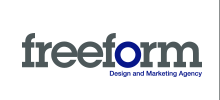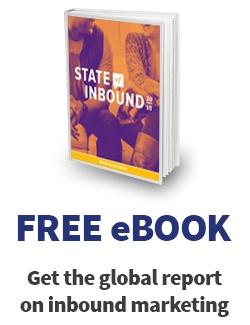These days, if you’re looking to succeed in marketing and thrive in business, there’s one imperative realization you must come to terms with: the buyers are taking control and they’re tired of hearing your crap.
It’s a blunt awakening, but one that gains credibility when you consider that 44 percent of direct mail is never opened, there are 200 million numbers on the Do Not Call list, and customers are generally tuning out impersonal, interruptive, “old-school” marketing.
According to Harvard Business Review, a recent Corporate Executive Board study of more than 1,400 B2B customers found that those customers completed, on average, nearly 60 percent of a typical purchasing decision—researching solutions, ranking options, setting requirements, benchmarking pricing, and so on—before even having a conversation with a supplier.
The marketing landscape has transformed immensely over the past ten years and many businesses are now left wondering how to communicate with a new breed of consumers unwilling to listen to their 30-second spiel.
It was this realization that brought a large packaging company to FreeForm in search of answers to the consumer communication conundrum.
Rewind to 2012: the packaging company had no clear marketing plan or direction.
- The website was dysfunctional and had less than 1,000 unique visitors per month with no analytical or data systems to support it.
- Social media presence was less than 20 people on Facebook with no serious consumer engagement.
- The brand identity, product alignment, and customer-facing literature was limited and disjointed.
It was clear to company leadership that something needed to be done. It was also clear that there would be no simple “if you build it they will come” solution. Development of a scalable marketing plan and cohesive corporate identity to address the shifting dynamics of the customer decision-making process was the game plan and FreeForm was retained to get it done.
As with many companies, traditional marketing constituted the majority of the packaging company's marketing budget. However, this strategy presented difficulties for company decision-makers, including: difficulty in tracking return on investment, increasing blocking techniques, and high cost with a low yield.
The solution? Inbound marketing.
Since 2012, FreeForm completed a successful, transformative rebrand due in part to the following:
- Implemented a customer-facing product consolidation/SKU structure
- Created a best-in-class corporate identity and mission statement
- Built a ubiquitous custom website, open source CMS, and custom APIs
- Designed all customer-facing literature and corporate assets
- Created ongoing superior search engine optimization models
- Implemented cohesive marketing and branding plans
- Completed lead scoring processes, contact segmentation, analytics, and workflow automation
- Created an engaging e-learning center on the company's blog website
The results have been no less than stellar.
In the three years prior to FreeForm’s involvement, the packaging company generated less than 30,000 visitors, captured no digital leads, and gained minimal customer and lead analytical information. Since late 2012, FreeForm has generated 162,000 unique visits to the company's digital real estate and generated over 1,000 organic leads.
- 77,000 came from organically-generated traffic, which is the result of a world-class keyword strategy (112 keywords ranked in the top three on Google and 139 ranked in the top ten on Google).
- Over 21,000 unique visitors came from 6,000 referring inbound links.
- 63,000 unique visitors came from social media, E-mail marketing, paid advertising, and direct traffic referrals.
- 15,000 unique visitors (and 290 leads alone) came from the company's blog website.
- In the last 90 days, marketing has increased unique visitors by 41 percent and leads by 17 percent compared to the previous year.
In total, FreeForm markets to just under 3,000 company contacts on an ongoing basis. However, not all visitors, leads, and contacts are created equal. The following is a recent sample of one of the 39 new leads marketing gained in the last few weeks:
Jeremy is in purchasing at PepsiCo. He found the packaging company through a Google keyword search six days ago and he willingly provided his name, E-mail, phone number, and his permission for the company to send him additional information. Over the past six days, FreeForm tracked 12 different digital activities from E-mails he opened, website pages he visited, and forms he filled out. We began to lead score Jeremy based on his activities to determine what product he wanted and when (or if) he needed to speak with a salesperson. Jeremy then ordered a product sample through the website. We automatically put him into a list with other interested product prospects and sent him a personalized E-mail on the product, which we could see he opened. Jeremy, according to our lead-scoring metrics, is in the queue to advance from a marketing-qualified lead to a sales-ready lead. He’s ready for a sales call!
This example illustrates a critical point: the leads generated through the marketing process have all voluntarily opted into the system. This means they are interested in specific packaging products and have willingly given a packaging company their contact information and permission to track their buying habits in order to provide them with relevant content.
It’s clear that our packaging client made the realization: the buyers are taking control. Now, with an understanding of this realization, an effective means of engagement, and a marketing automation agency to implement it, the packaging company is able speak the same language as their customer base…and they’re loving the sound.
Most marketing companies are stuck on the ideas of yesterday. We at FreeForm focus on the ideas of tomorrow—to revolutionize today and go head-to-head with innovation at its finest. Our approach: design thinking. Think. Feel. Do. Through desirability, feasibility, and viability, we redesign the idea of innovation and, through it, rediscover the world through a new lens.



